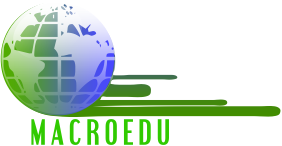Some of the most fun bits from the Harry Potter movies involve the front page of the Daily Prophet, the wizarding newspaper with photographs that move.
“In Harry Potter, that’s magic,” says Jonathan Coleman, a scientist at Trinity College Dublin in Ireland. “But for us, that’s technology.”
Coleman and his team have created a new type of two-dimensional (2-D) electronics called transistors. They are totally flat electronics that can potentially be printed extremely cheaply. These printed electronics could have any number of uses. They could, for example, be used to replace traditional price labels in a supermarket. Instead of having an employee with a label gun walking around changing prices, electronic labels could update themselves automatically.
Connecting The Internet Of Things
These electronics could make passports that renew themselves, or wine bottles that tell you when they’re being stored at too warm a temperature. As in the Harry Potter scenario, they could be used to make moving newspapers, posters and book jackets.
Coleman sees this technology merging with the Internet of Things to make even the most ordinary items connected. The Internet of Things refers to connecting devices of all kinds, including everyday objects, to the Internet. Your carton of milk could now have Internet connection through its label, speaking directly to your smartphone to tell you when it’s begun to run out or go bad. Your bedroom window could offer continuous weather updates.
“If you can print electronics very cheaply, you can imagine things that are almost unimaginable,” Coleman says.
New Transistor Materials Less Expensive
Printed electronics have existed in some form for about 30 years. The advantage these new transistors hold over older printed electronics has to do with their building materials. While most printed electronics are made from polymers, which include plastics, this new invention is made out of graphene.
Graphene is a 2-D honeycomb lattice of carbon only one atom thick. It’s strong, light and an extremely good conductor, plus — and perhaps most importantly — it’s cheap. Graphene is a much-talked-about nanomaterial. Nanomaterials are known for being tiny, much smaller than the diameter of a human hair.
“It’s made from graphite, and graphite’s just something that’s dug out of the ground,” Coleman says.
2-D Electronics Offer Better Quality
In addition to being cheaper, the new 2-D printed electronics stand to be much better quality than current versions, says Coleman. Existing types have a number of performance limitations that have to do with staying stable and changing one form of energy into another.
The transistors were printed using graphene nanosheets as electrodes, or conductors of electricity, with two other nanomaterials as the other parts of the transistor. The nanomaterials are produced in liquid in a method developed by Coleman. The resulting nanosheets are flat and relatively wide, and can be conducting, insulating or semiconducting depending on the material.
The 2-D nanomaterial transistor research was published this month in the journal Science.
Coleman estimates it could be a decade or so before products incorporating this technology are good enough to make it to market. This is a relatively short timeline, he says, because there’s so much global interest in nanomaterials such as graphene, and therefore so many scientists working to optimize products like these. His own research is part of the Graphene Flagship, a European Union-funded project to further graphene development with potential uses for the public. The project has received funding of a billion euros, or more than a billion U.S. dollars.
Scientist Predicts Technological Revolution
“It’s within touching distance,” he says. “We know what needs to be done; it’s just a question of doing it, and the money is in place.”
The 2-D printed electronics are only one potential use of nanomaterials such as graphene. Other uses under investigation include extremely fast-charging batteries, sponges to clean up oil spills and solar panels that work even in the rain.
Coleman has high hopes for future uses. “Nanomaterials have a whole host of wonderful properties, which I firmly believe are going to change the world by allowing us to make things and applications better, faster and cheaper,” he says. “We have a technological revolution coming down the track that we’re starting to see the first fruits of, and I think we’re going to see amazing things over the next decade or so.”















